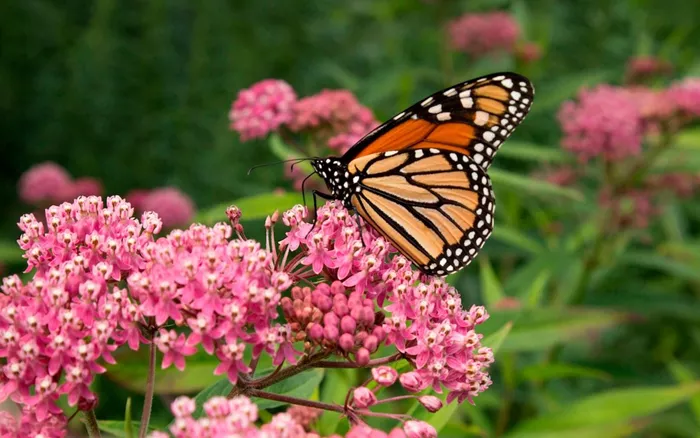The Wisconsin Department of Natural Resources (DNR) has designated milkweed as the Rare Plant Monitoring Program’s 2025 Plant of the Year, urging residents to plant milkweed to support declining monarch butterfly populations.
Milkweed is essential for monarchs, serving as the sole host plant for monarch caterpillars and a vital nectar source for adult butterflies and other pollinators.
Wisconsin is home to 13 native milkweed species, five of which are classified as endangered, threatened, or of special concern. The state’s only nonnative milkweed is showy milkweed (Asclepias speciosa).
Monarch butterflies depend on milkweed to complete their life cycle, laying eggs exclusively on milkweed leaves, which caterpillars consume for survival. Monarchs breed in Wisconsin during spring and summer before migrating south to Mexico in late fall to overwinter.
Despite a slight increase in monarch overwintering population from 0.99 to 1.79 hectares between 2023 and 2025, the overall trend remains a decades-long decline attributed to habitat loss, pesticide use, and climate change.
Jay Watson, a DNR insect ecologist, emphasized that planting milkweed helps create critical habitat not only for monarchs but also for other pollinators like butterflies and bumblebees.
The Rare Plant Monitoring Program engages trained volunteers to survey and monitor rare plants statewide.
This year’s focus on milkweed will support efforts to track the status of rare milkweed species across Wisconsin, contributing valuable data for conservation planning.
In addition to ecological benefits, milkweed species such as showy milkweed are drought-tolerant, support natural pest control by attracting predatory insects, and have historically been used by indigenous peoples for fiber and medicinal purposes.
Conservationists highlight that restoring milkweed habitat is a crucial step in reversing monarch population declines and sustaining pollinator diversity in the region


